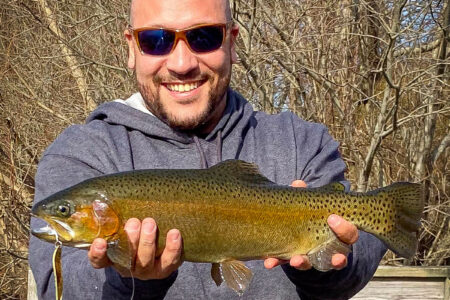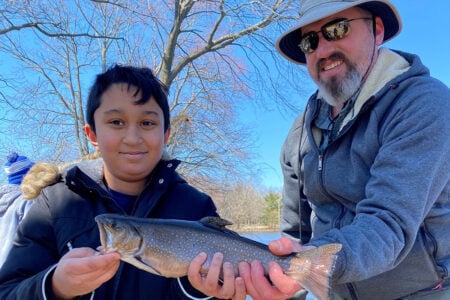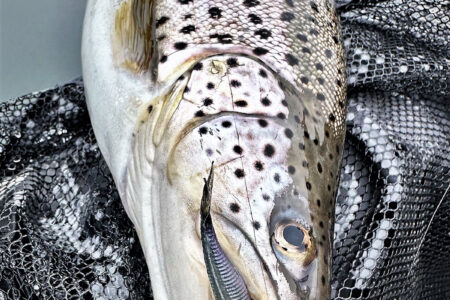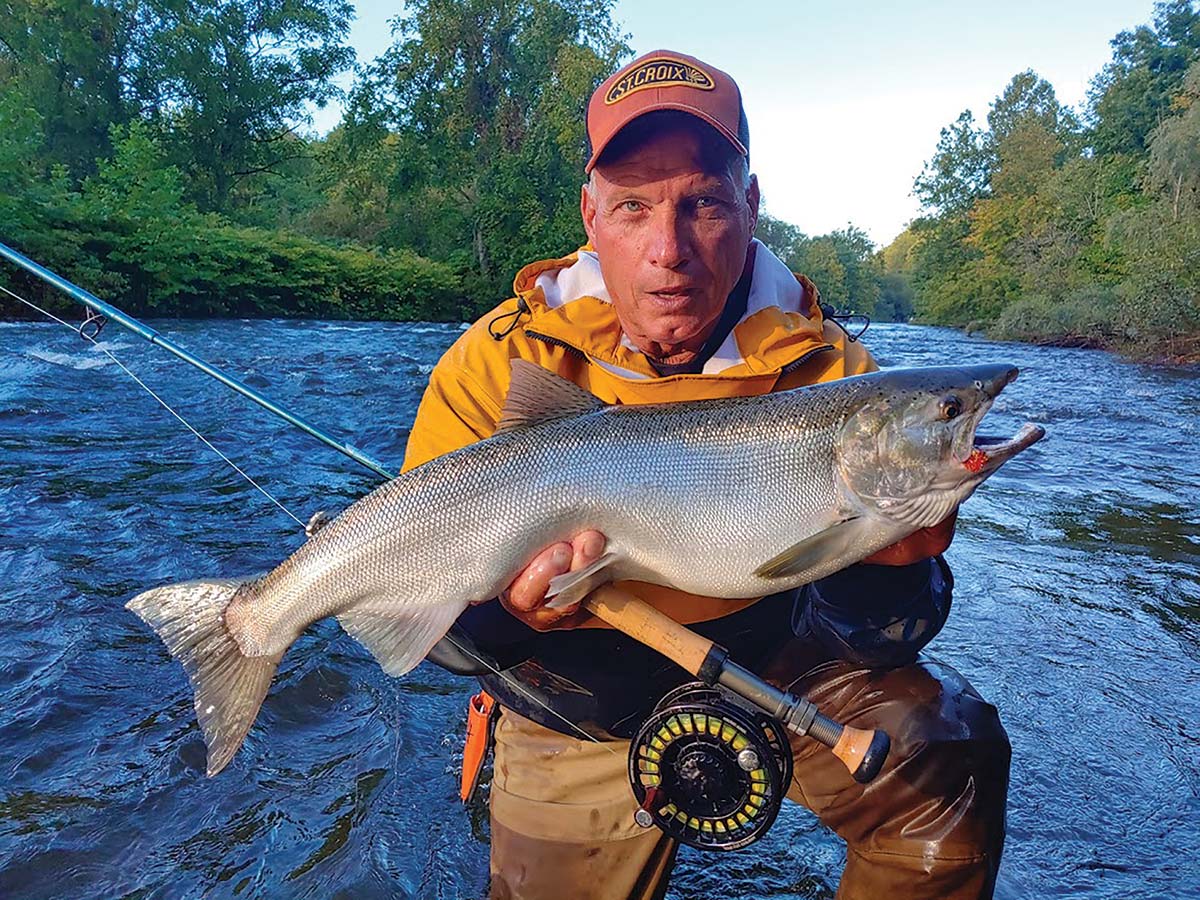
Hit the road, to upstate New York, for shorebound coho salmon on the fly.
When September and October roll around many of The Fisherman’s readers make their annual journey to the world renowned Salmon River in Pulaski, NY. Here one can enjoy what I like to call the ultimate light tackle experience by catching 15- to 30-pound king salmon to your heart’s content. During these two months thousands of Chinook, better known as king salmon run the Salmon River to satisfy their innate drive to perpetuate the species. Thanks to the prolific stocking program that New York’s Department of Environmental Conservation (NYDEC) has undertaken since 1974, anglers have been seeing phenomenal runs of kings all along the Salmon River and its tributaries.
But there is another salmon that is also stocked by the NYDEC that is considered even more of a prized catch by many anglers when fishing the river. This is the coho salmon, also known as silver salmon or “silvers.” Coho are another of the five Pacific salmon found in U.S. waters along with chinook, pink, sockeye, and chum salmon.
The coho is much smaller than the king typically averaging between 8 and 15 pounds, but you wouldn’t know this by the way it fights. And the males in particularly have a stunning spawning color that would make you think you are in the Alaskan wilderness. Their pinks and deep reds along their flanks coupled with their hooked kype make for a great photo especially when the full array of fall foliage is in the background.
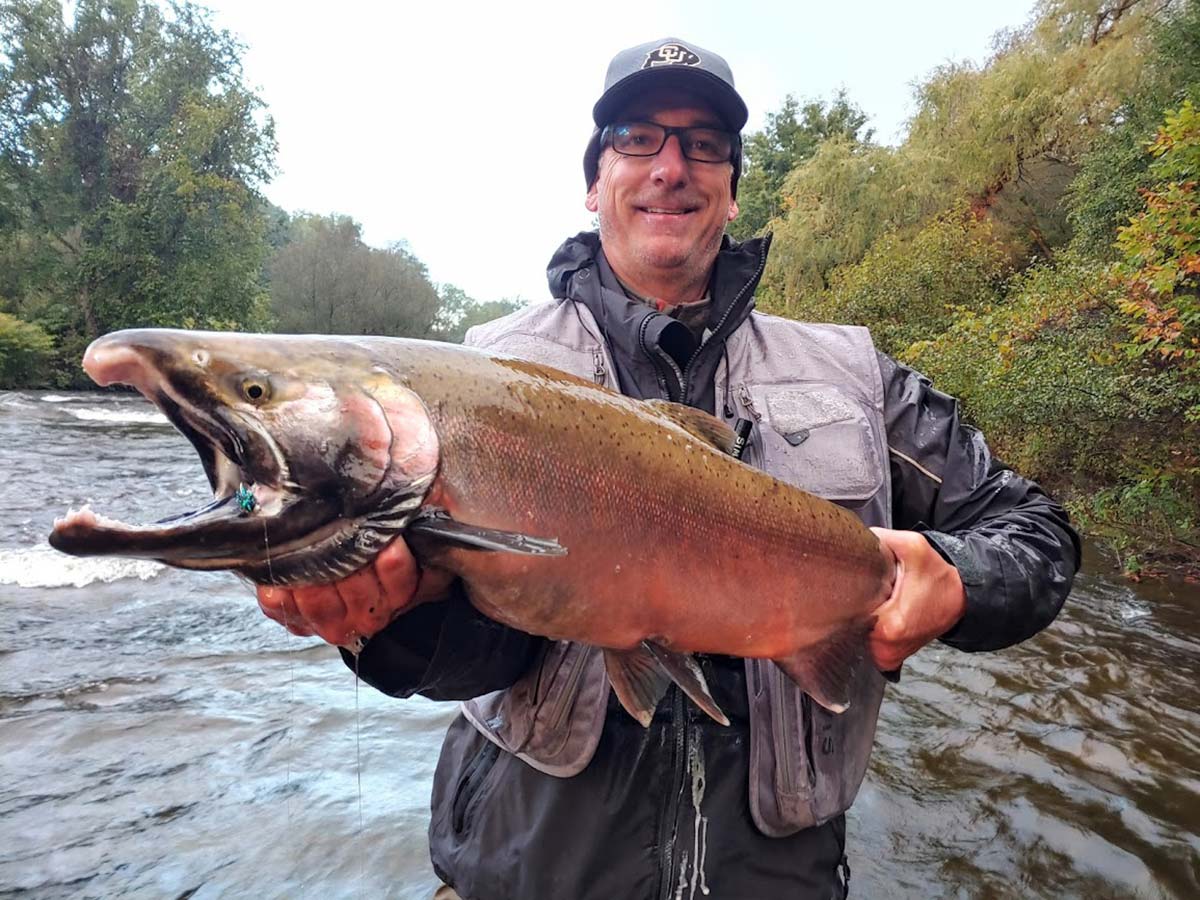
Oswego Bound
The NYDEC Salmon River Hatchery – located on County Route 22, 1 mile northeast of the Village of Altmar in Oswego County – reports “The maximum number of spring yearling coho that can currently be raised in the NYDEC Hatchery System is 135,000. Coho salmon stocking allocations maintain 90,000 fish at Salmon River to support egg collections at the Salmon River Hatchery. The remaining 45,000 are split evenly between Eighteen Mile Creek and Oak Orchard Creek to determine if staging and tributary fisheries for coho salmon can be developed using spring yearling stocking.”
Kings and cohos fight very differently and you will immediately know the difference when one is hooked. Kings will make an initial run and then settle into a deeper hole and bulldog you for a long drawn out fight whereas the coho will take off in a blistering run in just about any unpredictable direction. Cohos will shoot up, down, or across river in a blink of an eye which will leave you with a whole bunch of slack in your line that you will need to take up quickly. Failure to do so will usually result in the slack line getting caught around a rock and the coho breaking off.
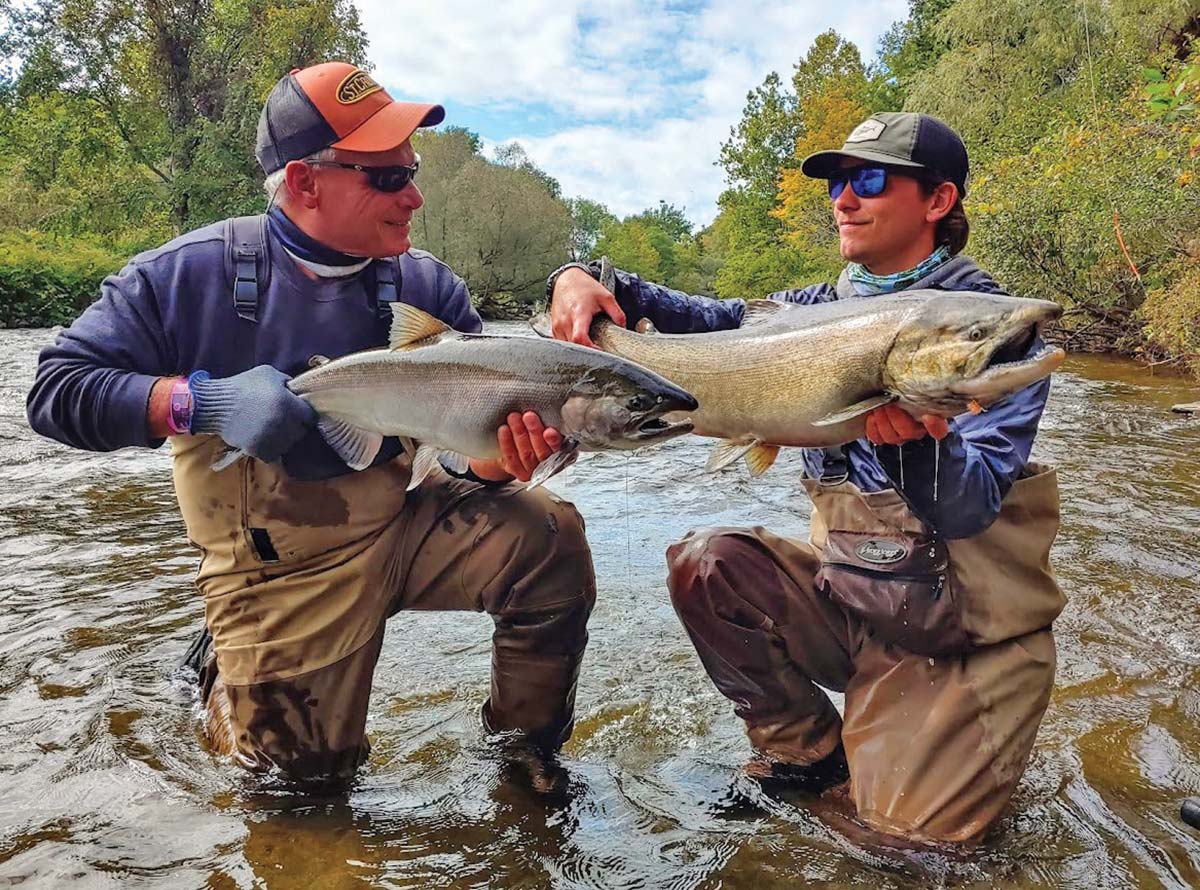
To specifically target coho your timing as to when to head up to Pulaski will be the key. If I had to pick one week to be at the Salmon River to experience the peak of the coho run it would be during the last week in September. Coho, like the kings, are anadromous. This means they will live their short, 3- to 4-year adult life in Lake Ontario and then move up the Salmon River and its tributaries to spawn. They then will die after spawning. In addition to lower stocking numbers by the NYDEC when compared to the kings, the coho will migrate upriver very quickly, sometimes typically overnight. This rapid ascent means that any given coho is only available to be caught by anglers for a short time in a particular place.
Many times that means being in the right place at the right time to catch them. And this is exactly what happened on September 27, 1989, when Jerry Lifton while fishing on the Salmon River caught the world record coho that weighed in at 33 pounds, 4 ounces on an official scale.
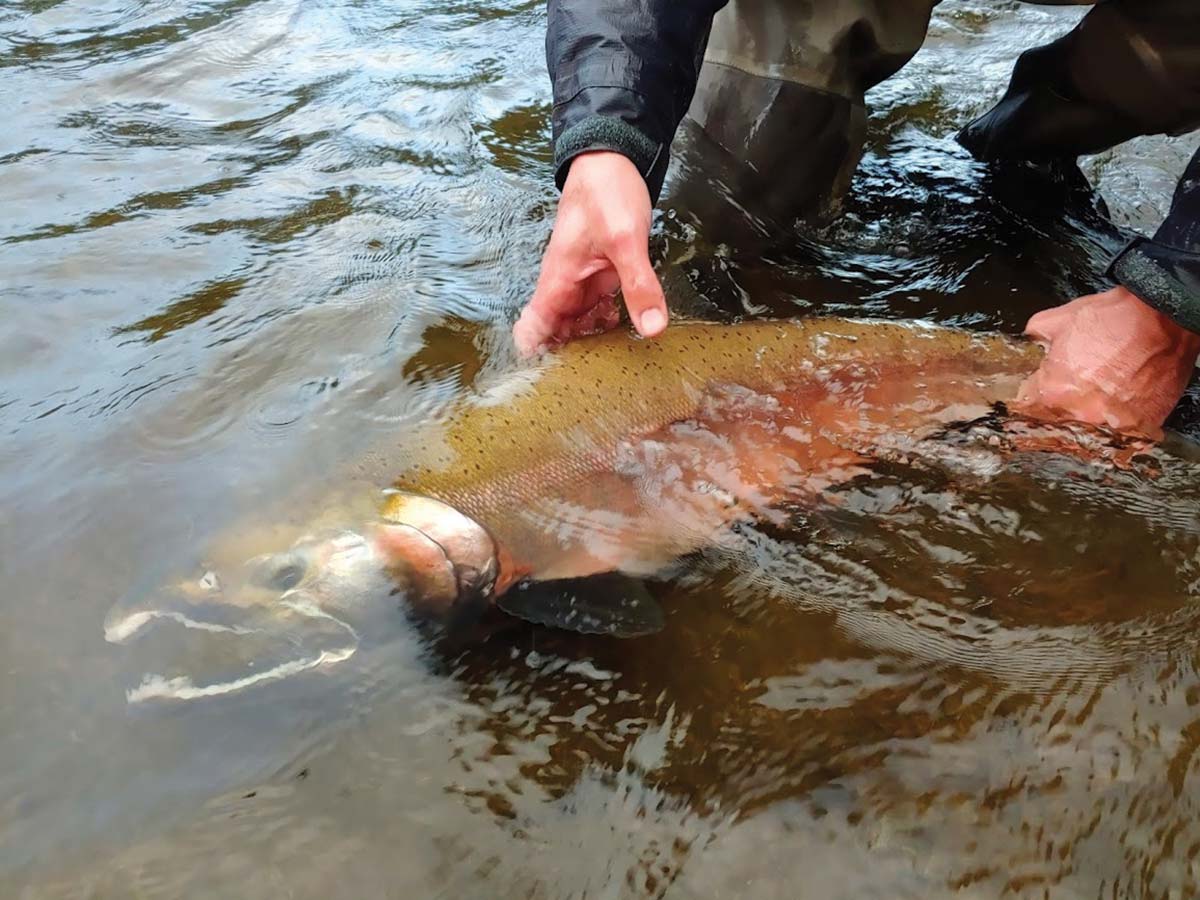
Douglaston On The Fly
I’ve been fishing the Salmon River for 40 years now and one of my most memorable trips was last year when I was with one of my tuna buddies, John Logioco. This was John’s third trip with me to the Salmon and to say we timed the coho run perfectly is an understatement. It was the last Saturday in September, the 25th, and the major run of coho took place on that day as we were standing in the Douglaston Salmon Run (DSR). For hours we had one coho after coho running up the river dropping in the hole in front of us. Hundreds must have passed us in a two-hour period, and as luck and skill would have it, we preceded to catch one after another. Some of the females we caught were bright silver which tells me they must had just been in the lake only about 10 minutes ago as we were less than two miles from its mouth.
John said “Getting into an aggressive coho bite is one of the most exciting experiences you can have on the Salmon River or any river for that matter. When the cohos suddenly show up, the entire mood on the river changes. Everything is taken up several notches. Smaller than the kings, you can see the coho racing in and out of the pools, weaving between the larger kings. It reminds me of seeing motorcycles come whizzing by my car while stuck in traffic.”
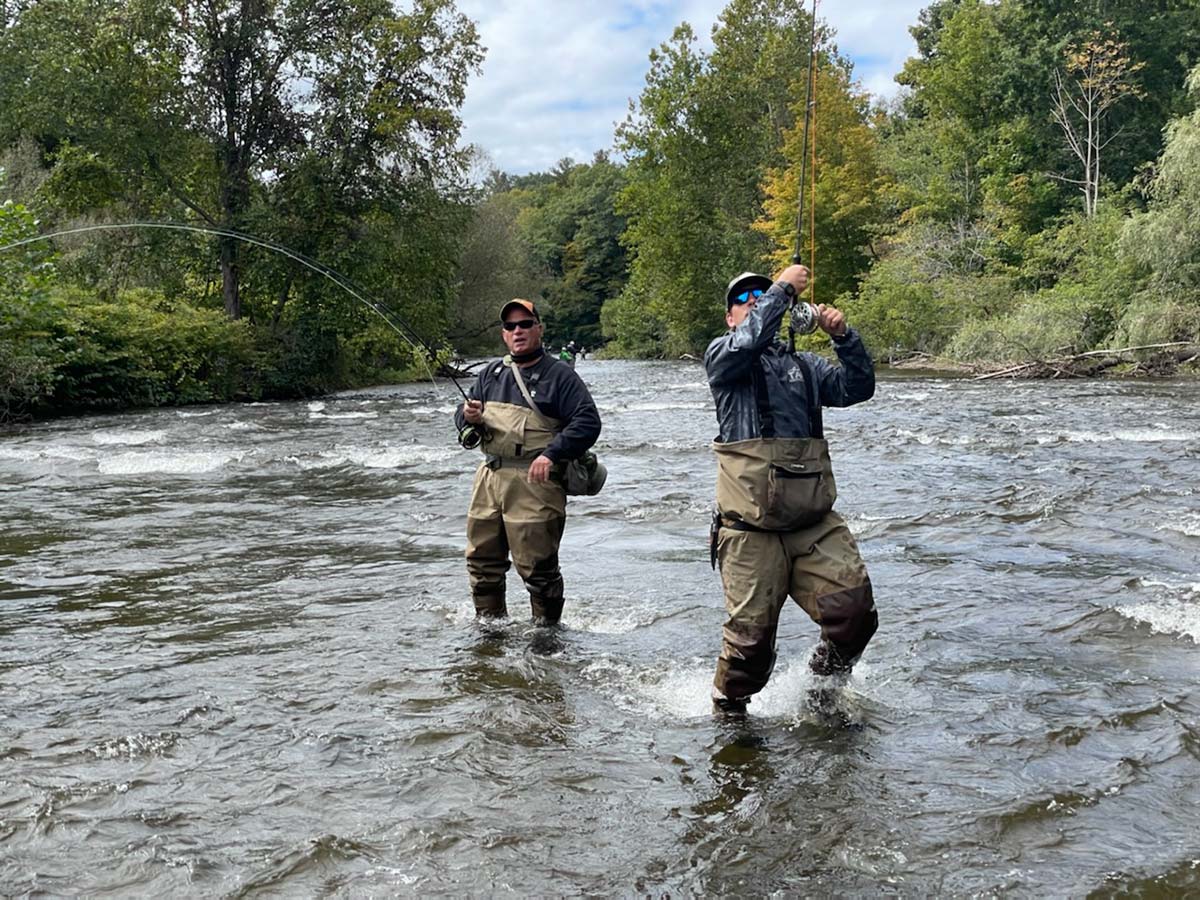
“One of the most memorable catches I can remember happened when I let my fly drift up and over the backside of the pool onto a large slab of an inclined rock,” John noted, while adding “The fly was swept up the slab in gin clear water only a few inches in depth. Like it was a slow motion action shot, I watched this gangster coho jump out of an adjacent seam, jet across the slab in a few inches of water, grab my fly and missile himself back into the pool on the opposite side of the slab. This was more akin to an ocean pelagic strike from the likes of a false albacore or small tuna and it one I will never forget.”
I like to fly fish the DSR because this is where the freshest fish, best fights, and least crowds will be found on the Salmon River. This 2-1/2-mile stretch of river is a pay to fish area where the salmon first enter the river from the estuary in Port Ontario. Along this particular stretch the fish are mean and fresh and will strike out with aggression at your offering.
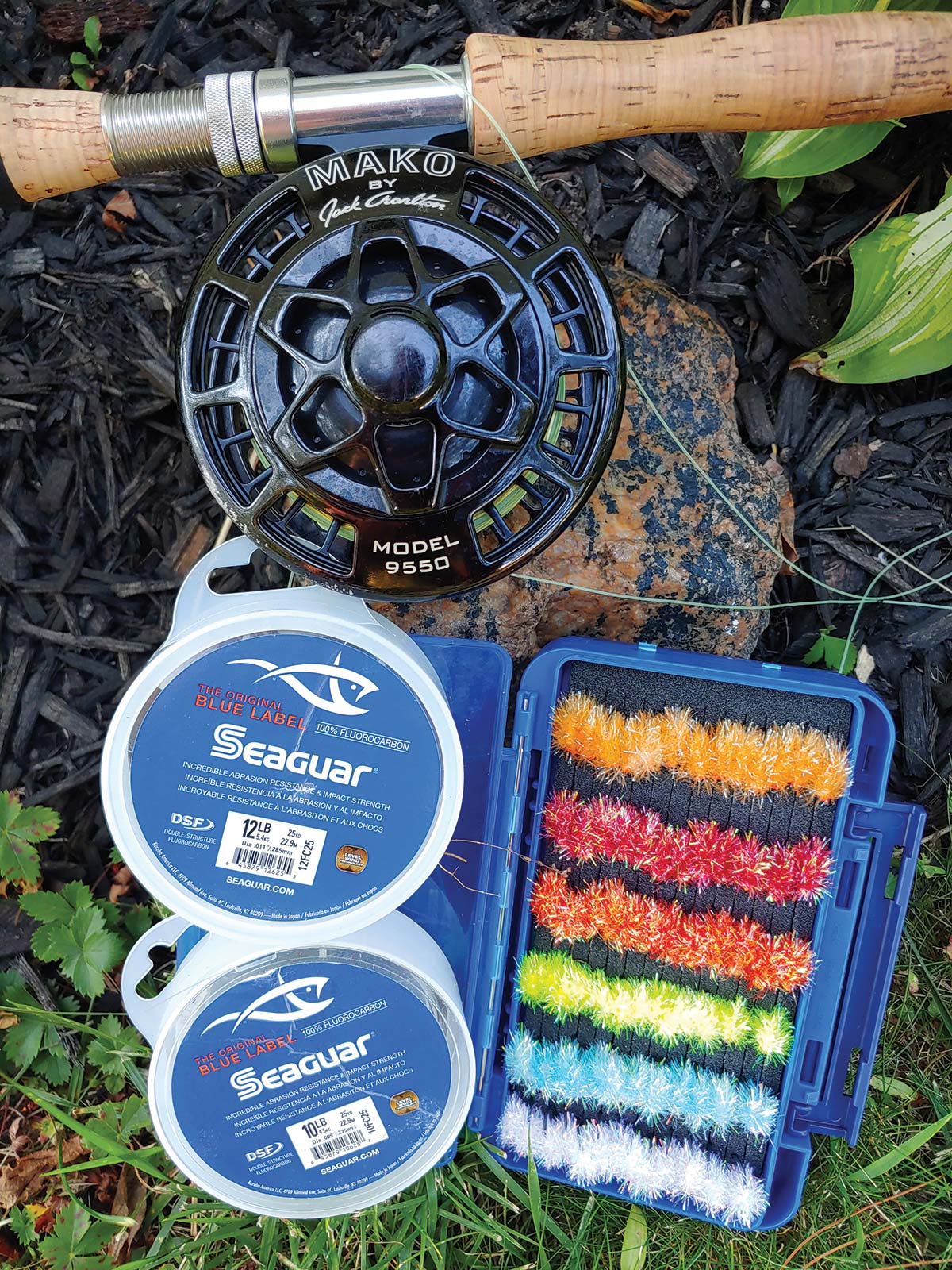
All Geared Up
We fish with our St. Croix 9/10 weight fast action fly rods for the cohos and kings, and the techniques are exactly the same for catching either salmon. For the cohos, however, I have what I call my go to #6 or #8 estaz flies that I like to fish once the sun climbs higher in the sky and the salmon can become sluggish even though they might be right in front of you. These colors are prismatic blue, orange, red, pearl, or pink.

Fly fishing for cohos is not what a purist would call fly fishing as for the most part your flies need to be drifting right along the bottom to ensure a hook-up, so it is often referred to as lobbing lead or chuck and duck. If your fly is too high in the water column it will not draw a strike. I convert my St. Croix saltwater set ups by first removing the saltwater line from the reel and replace it with a .028 diameter intermediate shooting line. At its terminal end I loop a 6-foot section of 12-pound test and I tie this to a small Spro barrel swivel leaving a 4-inch tag end to attached split shot. I then attach a 4-foot piece of 10-pound fluorocarbon leader to the other end of the barrel swivel, which is the maximum legal leader length allowed. My fly is then attached to the end of this 10-pound leader.
You’ll find that fresh run coho salmon are nutritious and are good to eat and can be prepared in a variety of ways. Some favorites are to bake, grill, or to make tacos with them. I personally like to marinate mine in a Ziploc bag with a Hawaiian or mango flavored marinade and then sear them on the BBQ grill leaving just a touch of pink in the center.
